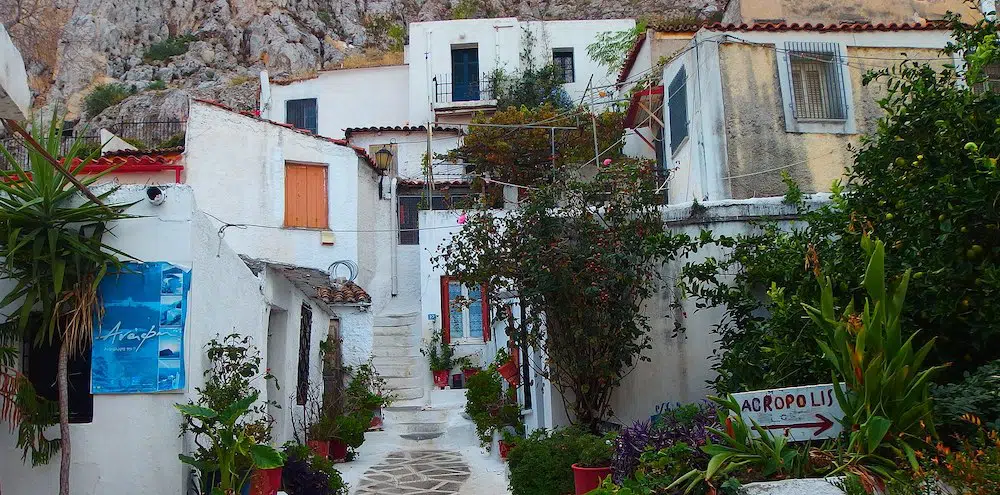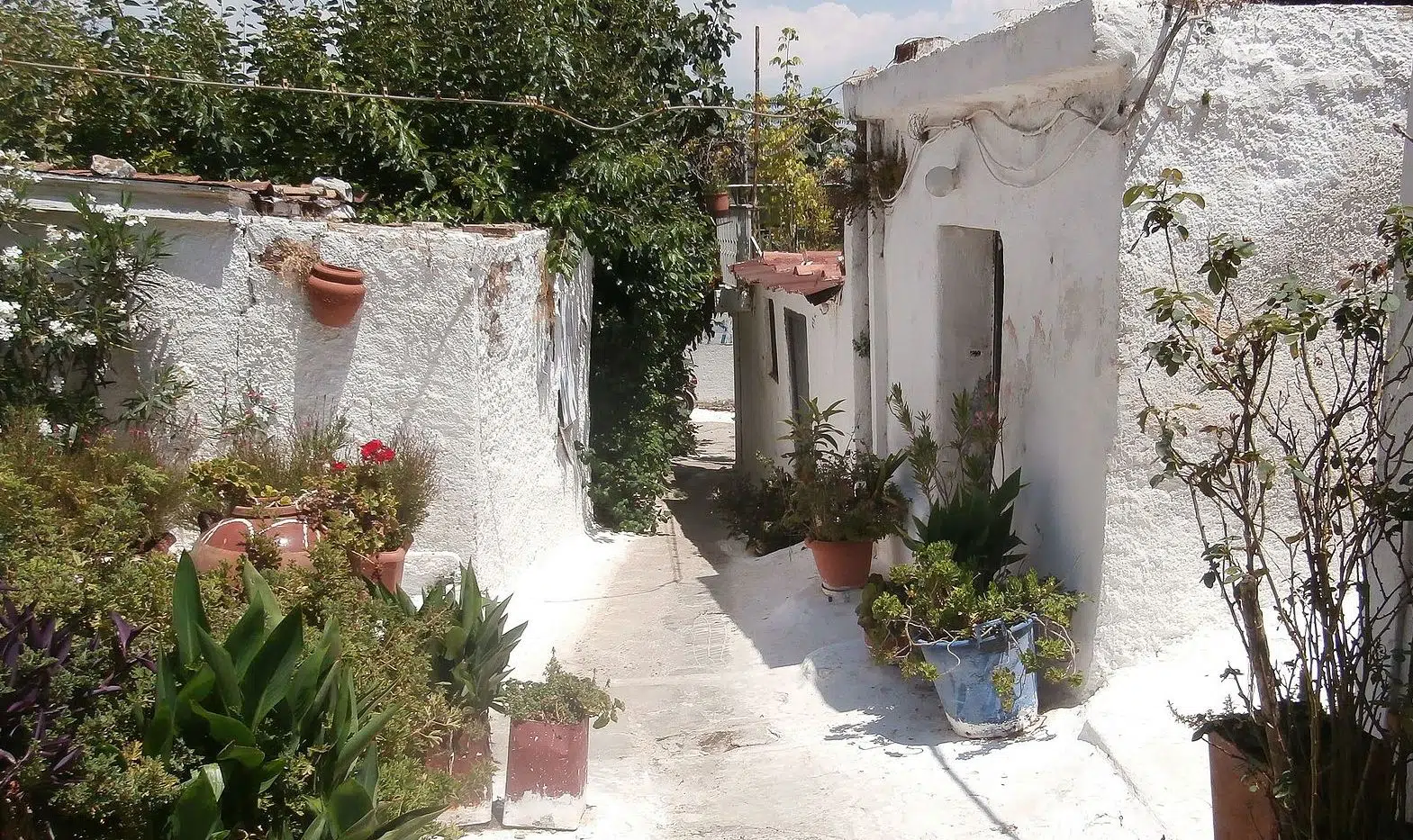
The tiny, scenic neighborhood of Anafiotika just above Plaka and below the Acropolis is often overlooked by visitors to Athens and even by some Athenians themselves.
With patches of cool and quiet, Anafiotika is a hideaway for about sixty residents who want a slower pace of life.
It was built in the 19th-century by workers from the tiny island of Anafi in the Cyclades, hence the name. In 1841, King Otto I encouraged workers to go and help transform the new capital of independent Greece into a modern metropolis and refurbish his palace.
Carpenters and masons from the Cycladic island of Anafi came, along with other workers from the Cyclades. They took over the rocky terrain located just below the northern slope of the Acropolis, hastily erecting homes that reminded them of their native islands.
The first two inhabitants were G. Damigos, a carpenter, and M. Sigalas, a construction worker. Soon, workers from other Cycladic islands also began arriving to the area to work as carpenters or even stone and marble workers. It was a buildings reconstruction period in Athens as was the era following the end of King Otto’s reign.
In 1922, immigrants from Minor East also settled in Anafiotika, altering the population that had up to that time been only from Cycladic islands.
In 1950, part of this neighborhood was destroyed for archaeologic research, and, in 1970, the state started to buy up houses.
Anafiotika: Whitewashed buildings in Athens

Today, Anafiotika retains the charm of simple, whitewashed buildings typical of the island of Anafi with an irresistible allure of bougainvillea flowers, clay pots, and roaming cats basking in the sun.
There are only about forty-five houses remaining, while the tiny streets from Stratonos to the Acropolis are still unnamed and the houses are referred to as “Anafiotika 1,” “Anafiotika 2,” and so on.
The neighborhood has small, square houses and narrow streets that often lead up to ladders or even dead-ends at terraces, places to sit and enjoy the night view of the city.
As one travel site put it: “In this oasis of tranquility, nestled beneath the walls of the Acropolis, the intensity of Athens seems miles away.”
The Church of the Panagios Taphos (the Monastery of the Holy Sepulchre) in the Anafiotika region belongs to the Brotherhood of the Holy Sepulchre in Jerusalem. It is a church characteristic of the Ottoman period, which was built at the beginning of the 17th century and is dedicated to Agioi Anargyroi. The church plays a prominent role in Easter celebrations, as it is where the Holy Light first arrives from Jerusalem on the evening of Holy Saturday.
There is also Aghios Nikolaos Ragavas, an 11th century church that is considered one of the most significant Byzantine monuments of the city. From there, one has a panoramic view of Athens and Lycabettus Hill.
Related: The Ultimate Guide to Post-Pandemic Athens
See all the latest news from Greece and the world at Greekreporter.com. Contact our newsroom to report an update or send your story, photos and videos. Follow GR on Google News and subscribe here to our daily email!



